An At-Home Clam Dissection! Uncover the Secrets of Invertebrates with Canned Clams
I’m Ken Kuwako, the Science Trainer. Every day is an experiment.
【This article is also available as a radio broadcast!】
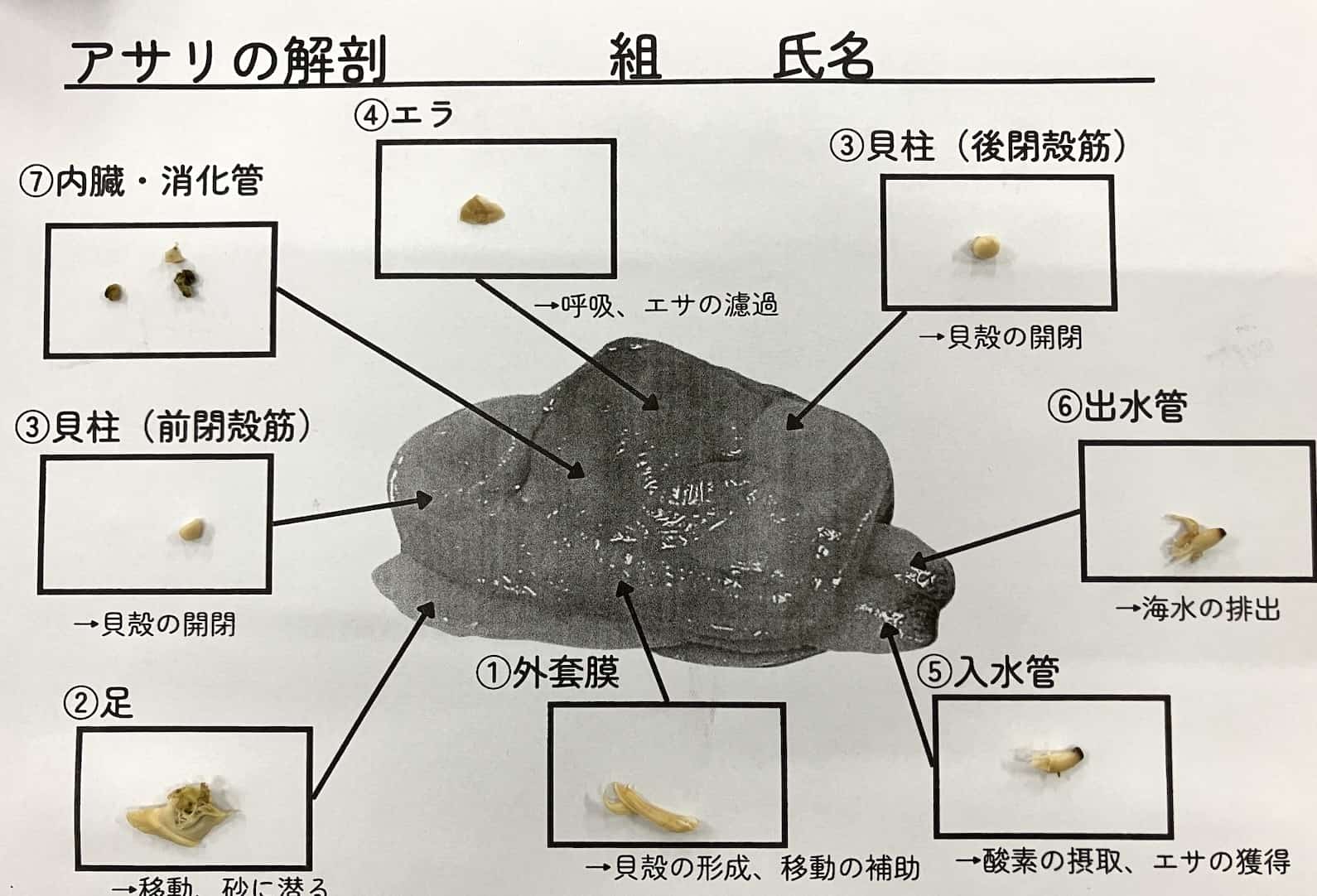
Today, I’ll walk you through the steps for a clam dissection. We all know clams from clam digging or as a tasty addition to miso soup, but they are also incredibly useful creatures for learning science. As a classic example of an invertebrate, they frequently appear in textbooks. Because they are easy to dissect, we can get a detailed look at their body structure, which is also helpful for comparing them with vertebrates. I’ve put together a video of the dissection process, so please use it as a reference!
Using Canned Clams & Getting Ready
Clams are mollusks and are a great, accessible choice for observing invertebrates. First, let’s learn a bit about their ecology by watching this NHK video. The way they use their foot and release their eggs is amazing!
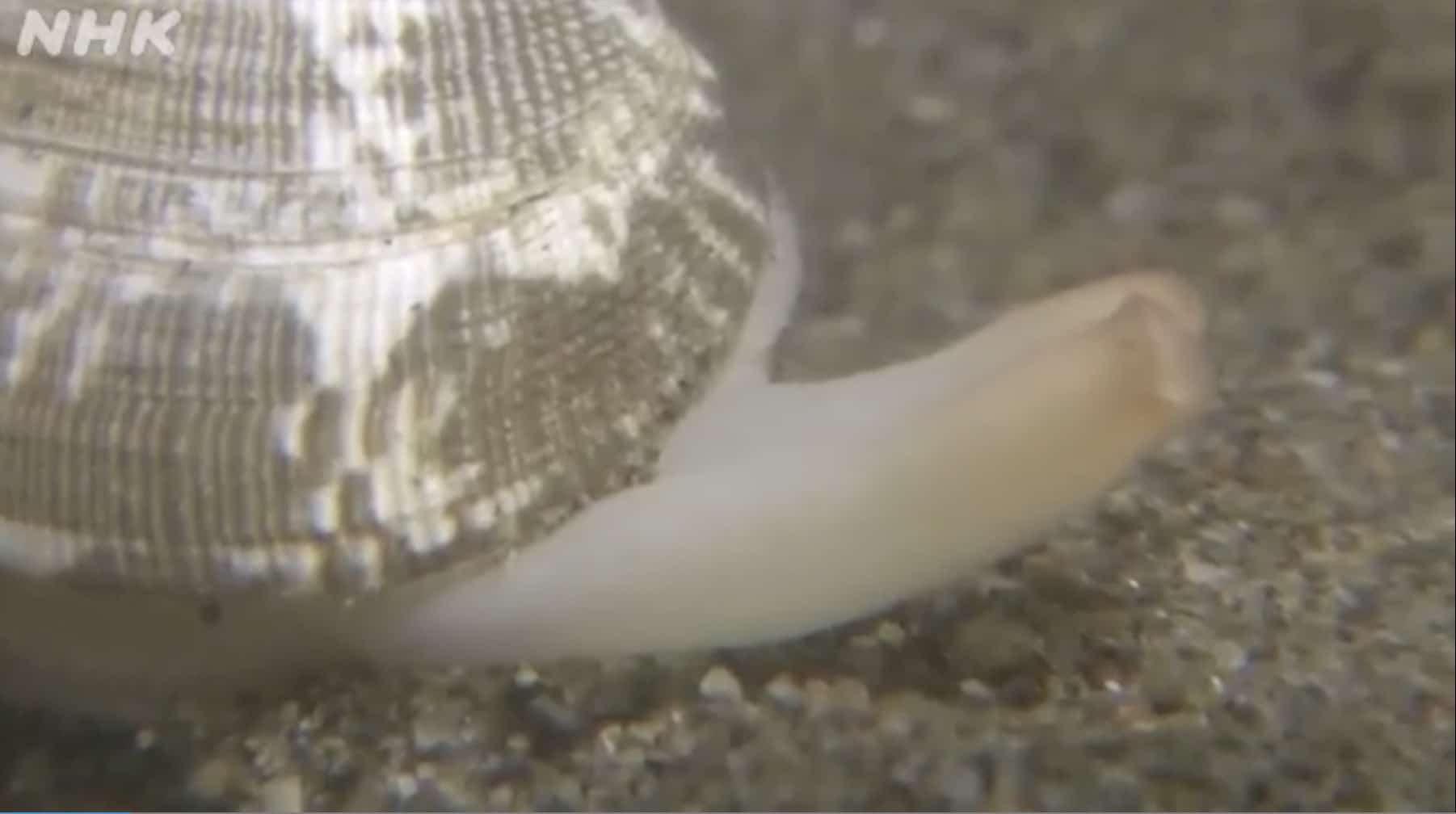
Let’s take a closer look at clams [Marine Life] | NHK Learning
https://www2.nhk.or.jp/learning/video/?das_id=D0024010631_00000
If you’re interested in dissecting live clams, this video explains the method in detail.
For this demonstration, however, I went with a much simpler approach using something you can get at any supermarket or online.
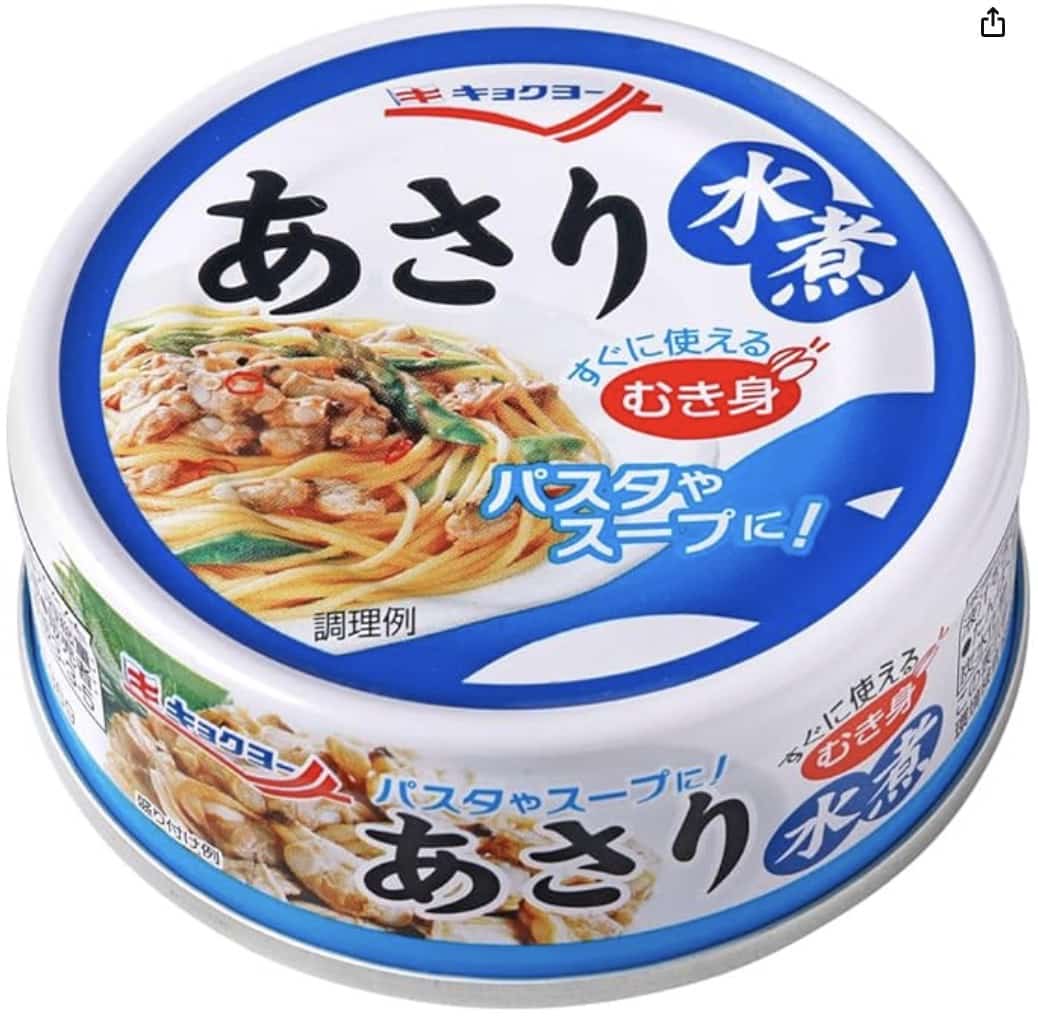
When I opened the can, I found a whopping 56 whole clams inside. That’s more than enough for an entire class! Getting fresh clams can be a hassle, but canned ones are easy to store and find, making them incredibly convenient for dissection experiments.

When you actually dissect a clam, you’ll find many interesting parts inside. Let’s get started. A few of my students (H, K, and I) created a worksheet for this lab. We’ll use it to place the organs on as we dissect.
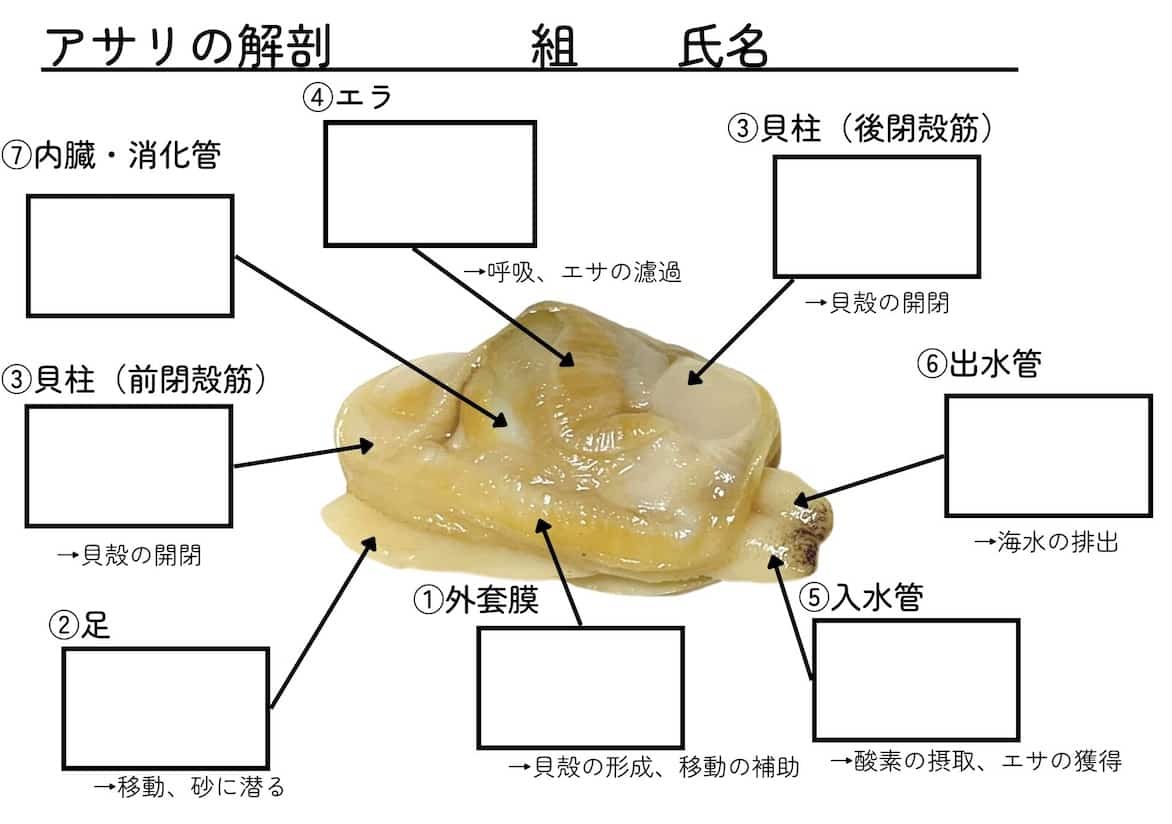
And when it’s done… ta-da!

Dissection Procedure
First, take a moment to carefully observe the clam and make a simple sketch.
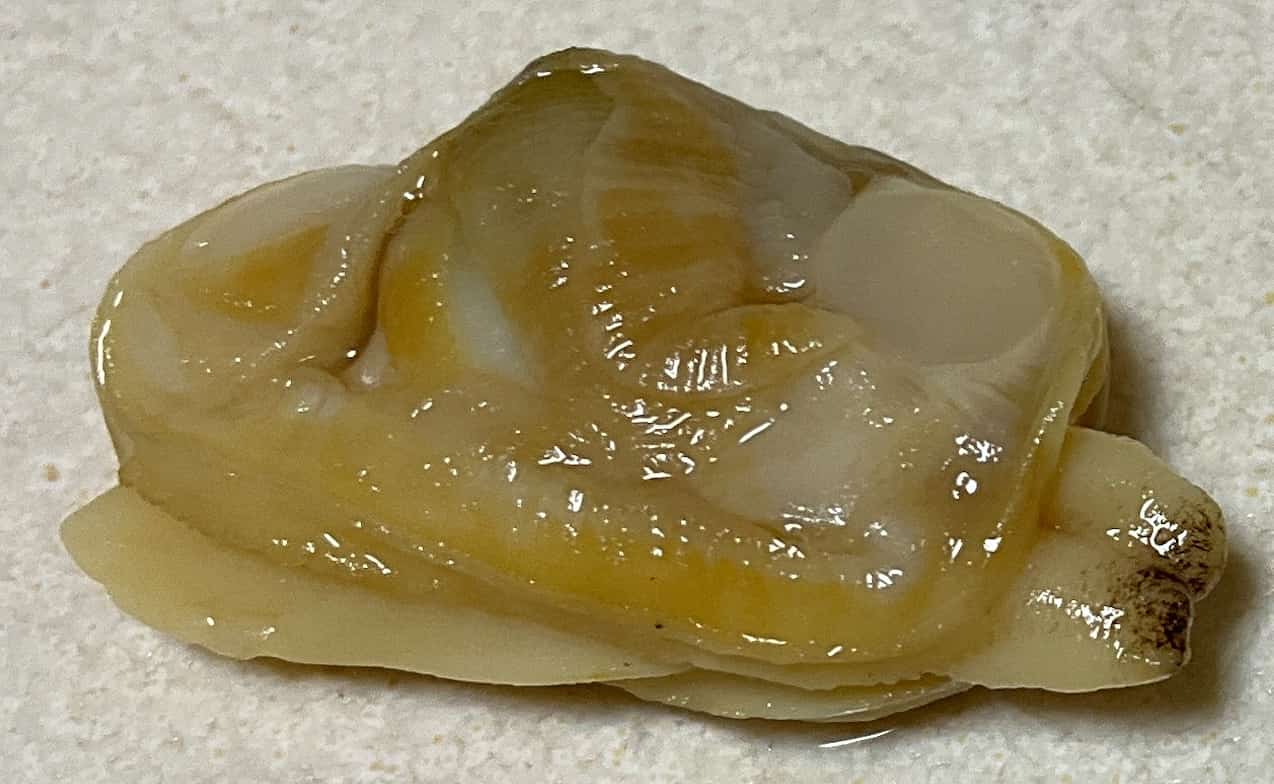
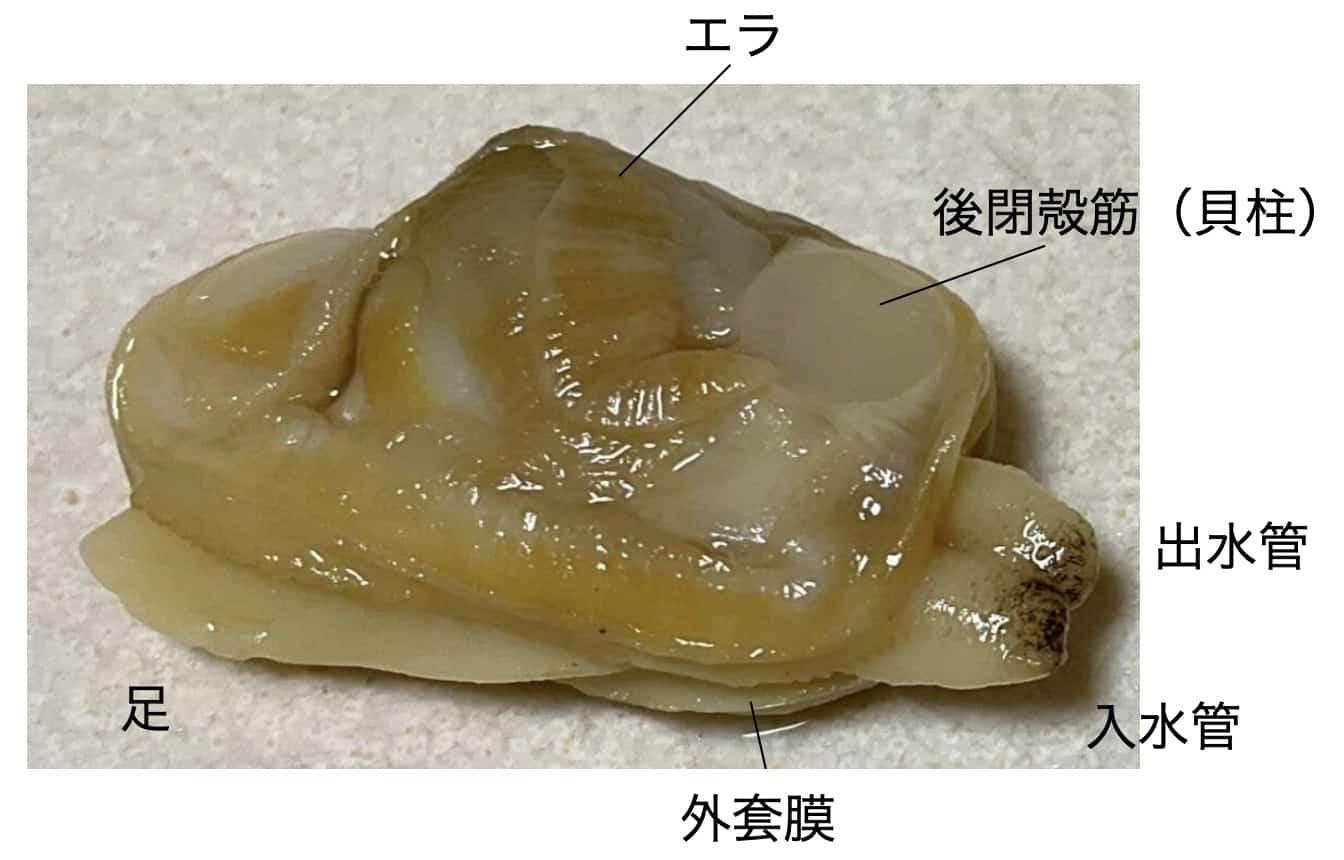
Jotting down the function of each organ at this stage will deepen your understanding. Having students sketch is a great idea here.
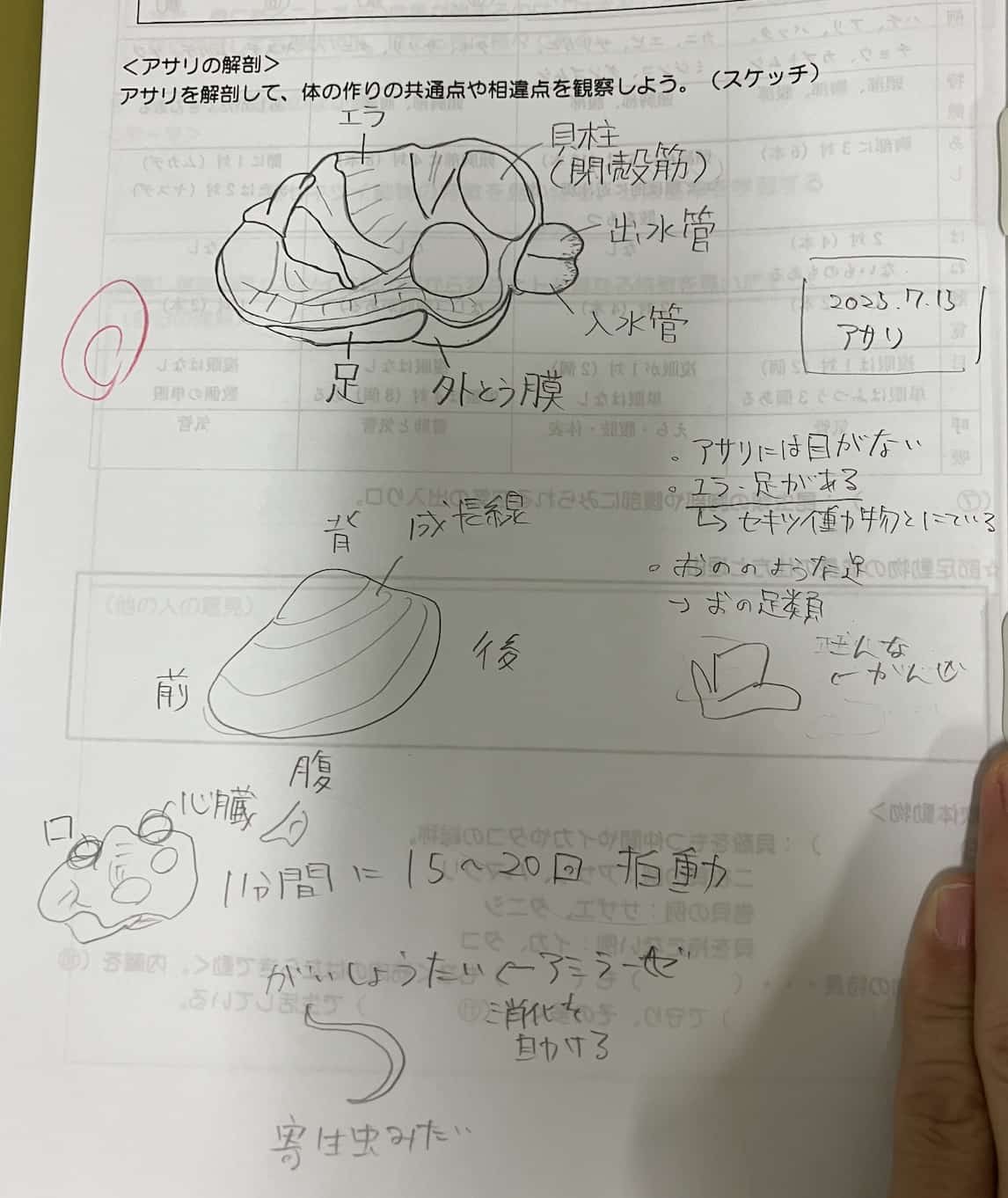
Clam Organs and Their Functions
- Incurrent Siphon: The tube that takes water into the body.
- Excurrent Siphon: The tube that expels waste products.
- Mantle: The membrane that creates the shell and covers the internal organs.
- Foot: The organ used for burrowing in the sand and for movement.
- Adductor Muscle: The muscle that closes the two shells together.
- Visceral Mass: The part containing the heart, liver, gonads, etc.
- Digestive Tract: The tube that digests and absorbs nutrients from food.
- Gills: The organ that takes in oxygen from the water and filters food particles.
Now, let’s begin the dissection.
1. Remove the Mantle
First, we’ll remove the mantle. I used two bamboo skewers for this, but tweezers and a skewer would also work well.
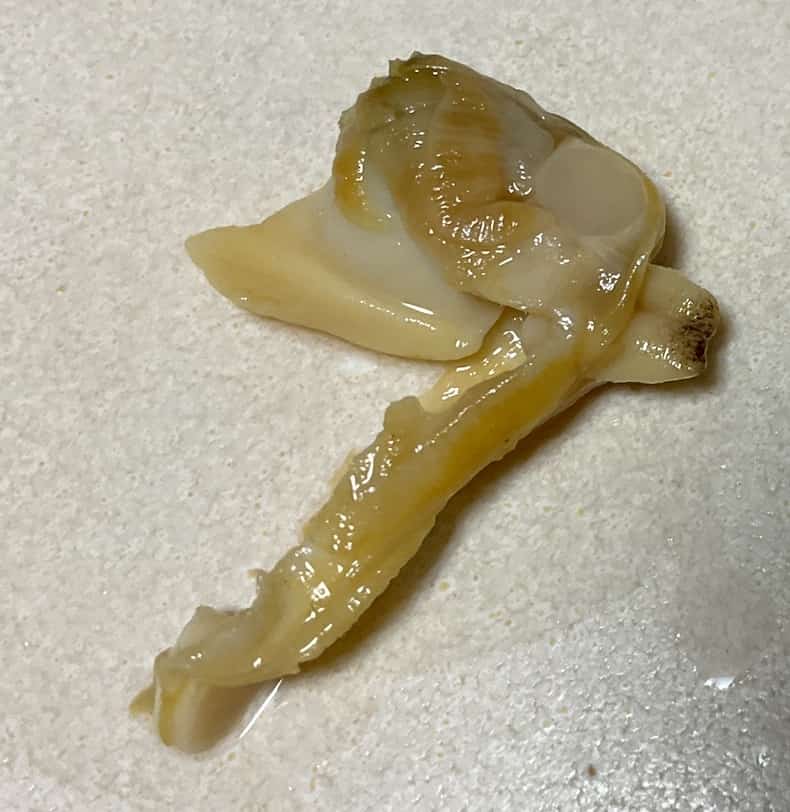
You can see the well-defined foot. It looks like an axe blade! This is where the class name for clams, Pelecypoda, comes from, which means “axe-footed.”
2. Remove the Gills
Next, I removed the gills. There’s one on the top and one on the bottom. It’s fascinating to see their distinct pleated structure. It’s not something you notice when you’re eating them, but a close look reveals their function.
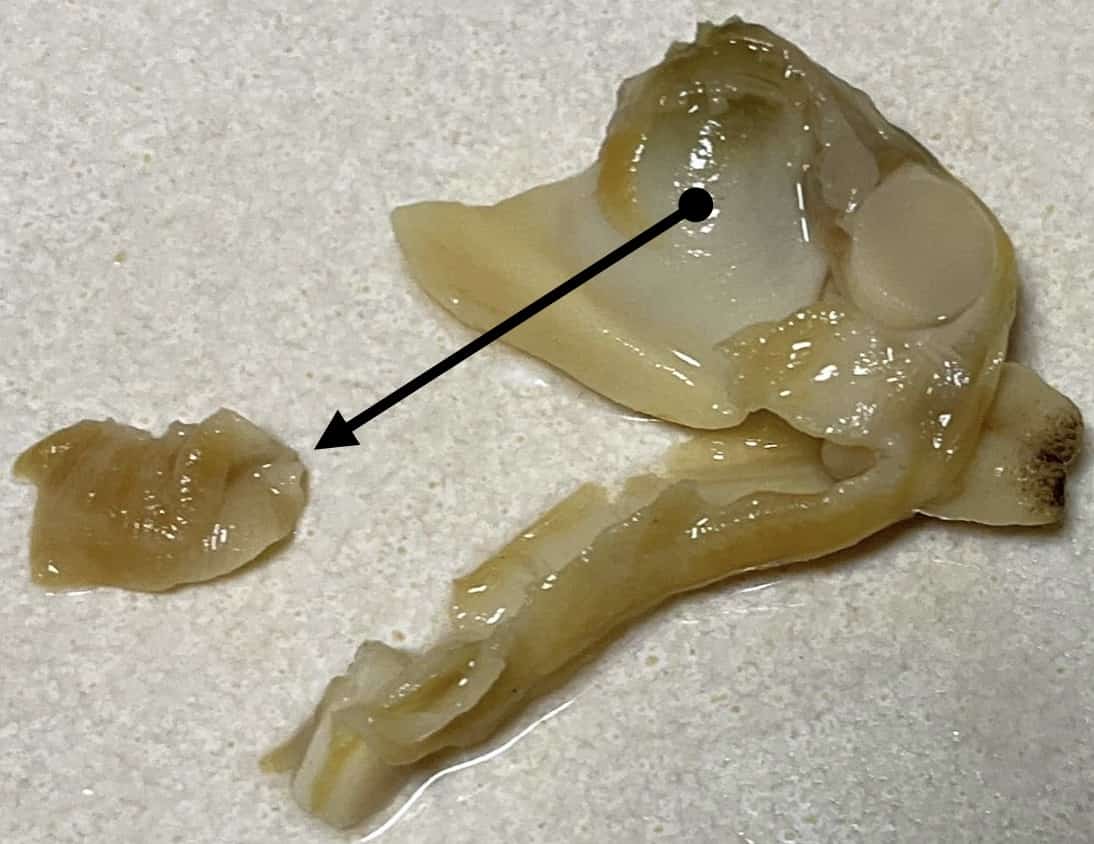
Gills

Side note: If you have time, try looking at them under a microscope. This is what you’ll see.
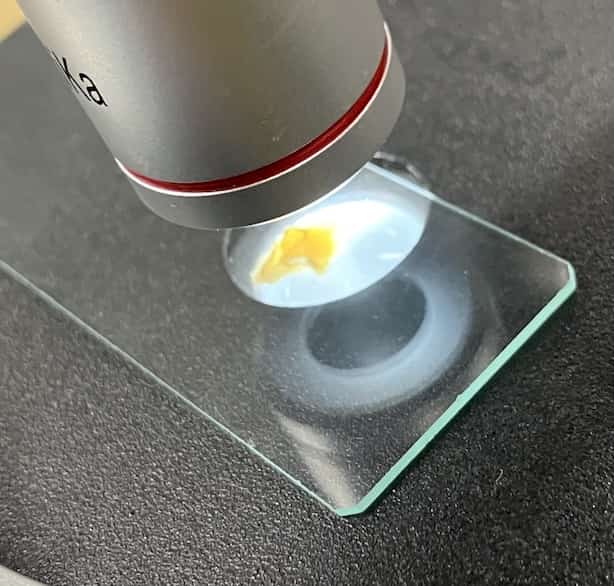
It looks just like a comb! Who knew you could see this kind of detail from a canned clam?
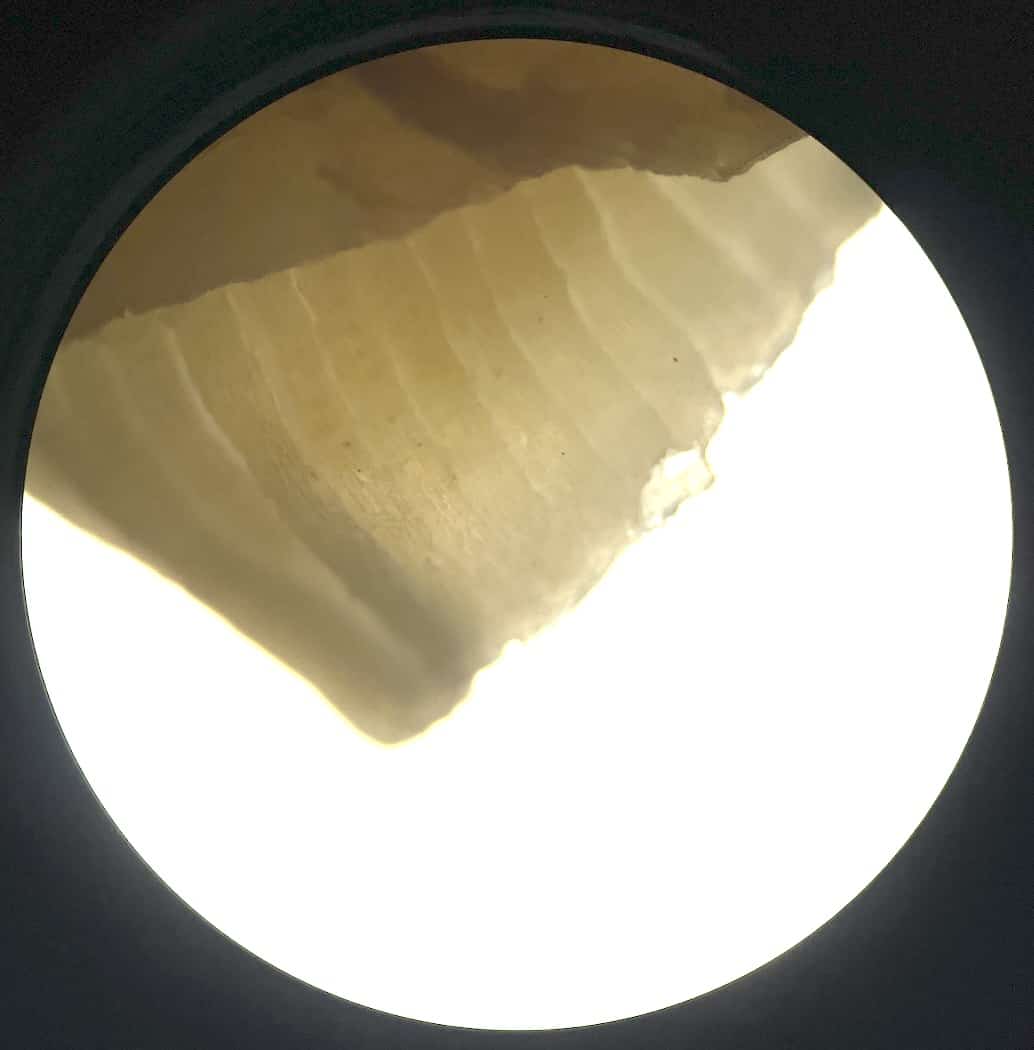
3. Remove the Adductor Muscle
I detached the anterior and posterior adductor muscles (the parts we call the “scallop” in a scallop).
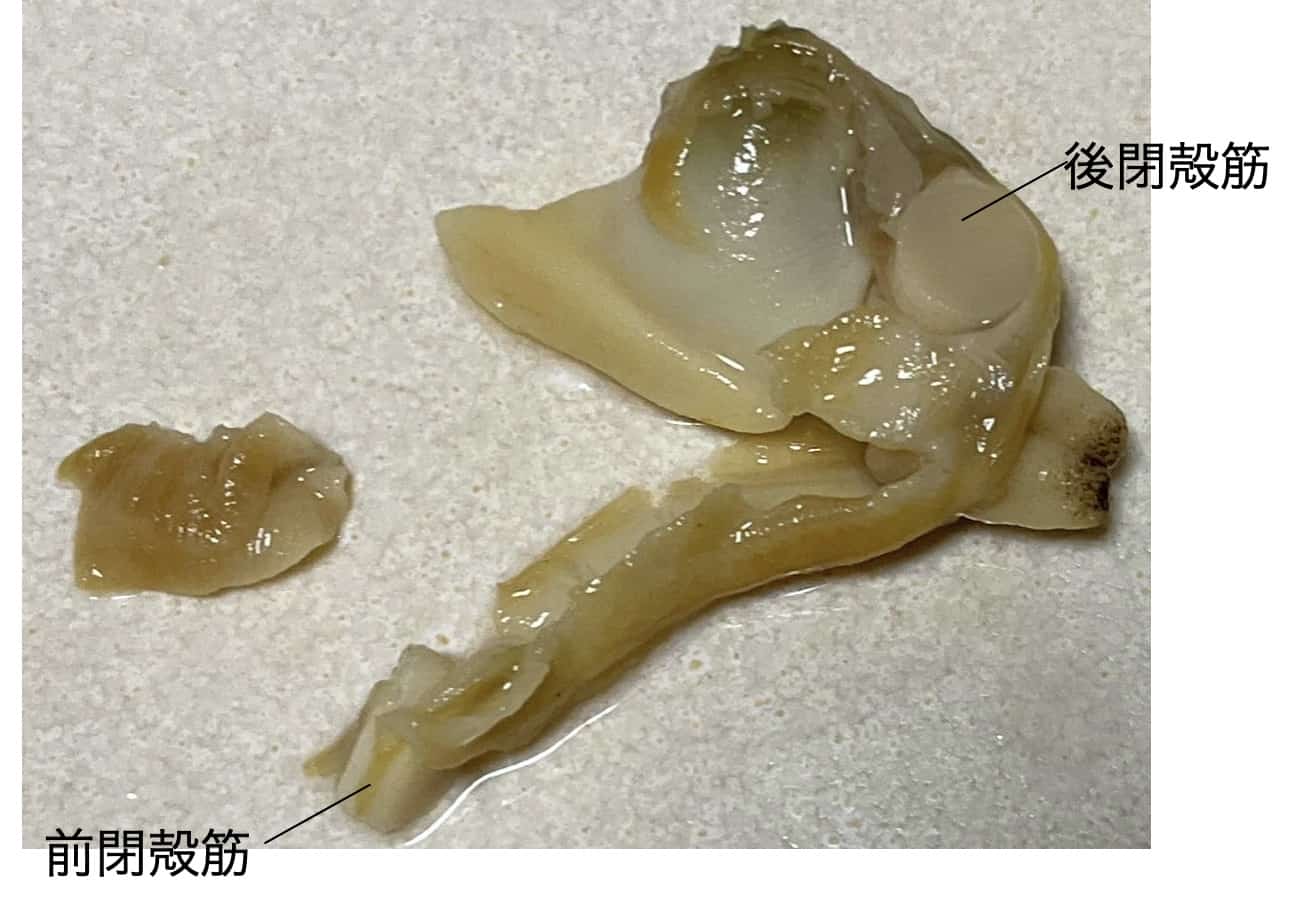
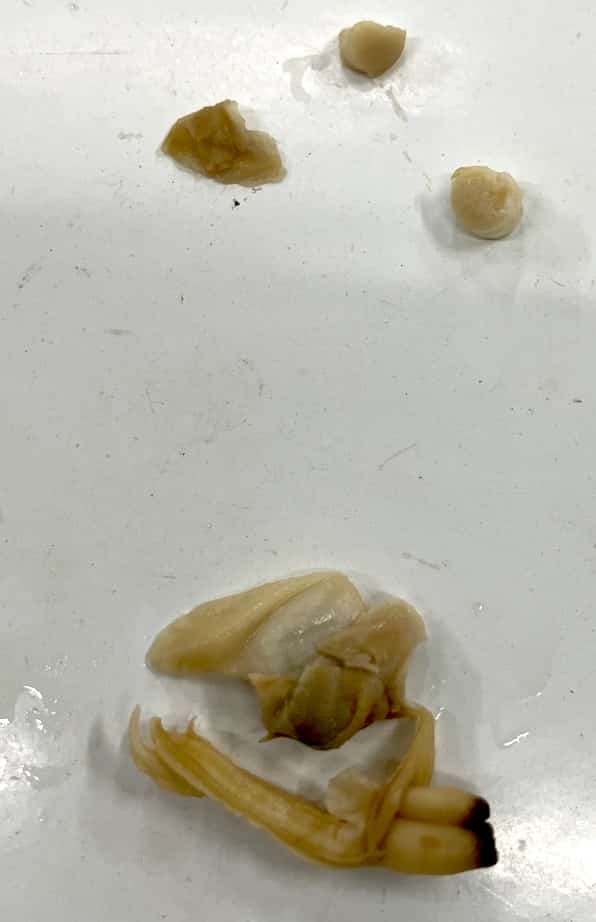
The thickness of the adductor muscle is impressive.

4. Observe the Mouth and Anus
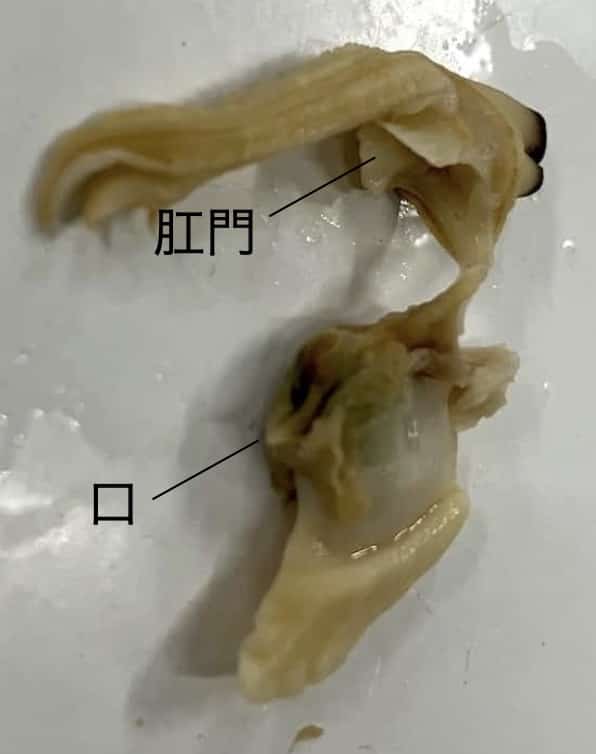

The system is pretty neat: food enters through the mouth, passes through the visceral mass above the foot, goes through the digestive tract to the anus, and waste is expelled through the excurrent siphon. It also looks like the heart is located just above the foot.
5. Observe the Digestive Tract
Finally, let’s examine the visceral mass.
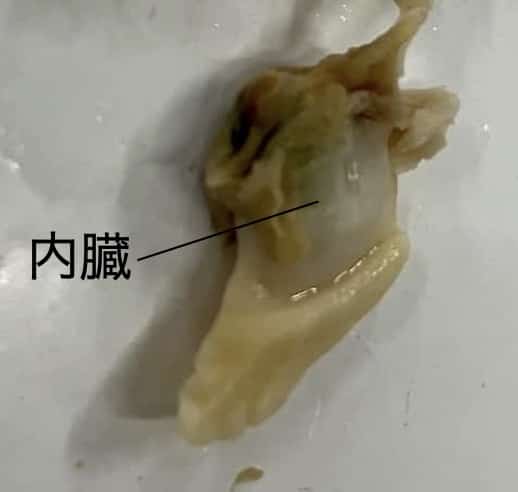
We’ll carefully open this part. If you’re gentle…
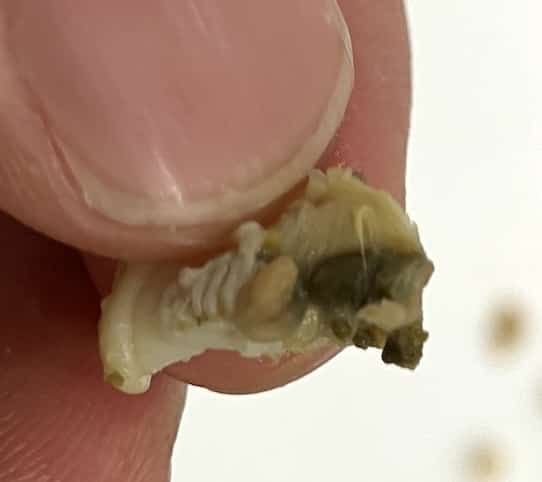
The visceral mass itself is a greenish, undefined blob, but inside you’ll find the digestive tract.
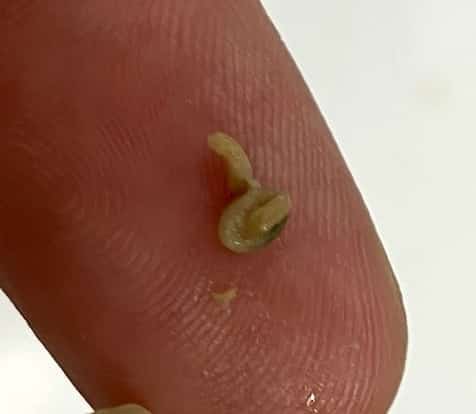
If you’re successful, you can pull out this long tube.
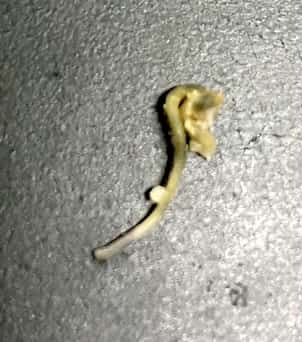
Let’s place it on the worksheet. Did you collect all the parts? My students were completely engrossed in this, some even competing to see whose digestive tract was the longest.

One student proudly showed me their find. Amazing!

Reference: Differences Between Vertebrates and Invertebrates
1. No Backbone (Vertebrae)
This is the most fundamental and defining difference. Vertebrates have a vertebral column (backbone) that supports the body and protects the spinal cord. Invertebrates lack this structure.
- Examples:
- Insects (beetles, butterflies): Have no backbone and are covered by a hard exoskeleton.
- Mollusks (squid, octopus, clams): Have no backbone and either have a soft body or a shell. Squid have cartilage, but it’s different from a vertebrate’s spine.
- Earthworms: Have no backbone; their body is divided into ring-like segments and they move by muscle contractions.
2. Exoskeleton or Body Surface Structure
Vertebrates have an endoskeleton (a skeleton inside the body) to which muscles attach for movement. In contrast, many invertebrates have different structures for support and protection.
- Examples:
- Arthropods (insects, shrimp, crabs): Covered by a hard exoskeleton made of chitin. This supports the body and prevents dehydration. They must molt to grow.
- Mollusks (clams, snails): Have a shell made of calcium carbonate. Octopus and squid don’t have shells but their internal organs are covered by a muscular mantle.
- Corals, Jellyfish: Lack a skeleton; their bodies are mostly water, or they secrete a calcium carbonate skeleton to form colonies.
3. Body Symmetry
Vertebrates are clearly bilaterally symmetrical (left and right sides are mirror images). Some invertebrates exhibit different types of symmetry.
- Examples:
- Echinoderms (sea urchins, starfish): Adults often show penta-radial symmetry (five parts arranged around a central point).
- Jellyfish, Sea Anemones (Cnidarians): Show radial symmetry, with body parts arranged around a central axis like spokes on a wheel.
4. Respiratory System
Mammals use lungs to breathe air. Invertebrates have a variety of breathing methods.
- Examples:
- Insects: Take in air through spiracles on their sides, which deliver oxygen directly to cells via a network of tubes called trachea. They don’t rely on lungs or blood for oxygen transport.
- Shrimp, Crabs, Squid: Use gills to breathe underwater.
- Earthworms: Breathe through their moist skin.
5. Excretory & Circulatory Systems
Mammals have kidneys to filter waste and a closed circulatory system where the heart pumps blood through vessels. Invertebrate systems are diverse.
- Examples:
- Insects: Have an open circulatory system, where blood flows freely within the body cavity. Waste is processed by Malpighian tubules.
- Mollusks (squid, octopus): Some have relatively advanced closed circulatory systems, but many invertebrates have an open system.
6. Nervous System and Brain Development
Mammals have a highly developed brain and a central nervous system centered around the spinal cord. The nervous systems of invertebrates are often simpler.
- Examples:
- Insects: Have a brain and nerve ganglia, but it’s far less complex than a human brain.
- Jellyfish: Have a “nerve net” spread throughout the body, but no central brain.
- Earthworms: Have a “ladder-like” nervous system.
7. Reproduction
Vertebrates reproduce sexually, and mammals give live birth (viviparity). Invertebrates show a huge variety of reproductive methods, including laying eggs, asexual reproduction, or both.
- Examples:
- Many insects and mollusks: Lay eggs.
- Earthworms: Are hermaphrodites that reproduce sexually and lay eggs.
- Planarians (flatworms): Can reproduce asexually by splitting, with each piece regenerating into a new individual.
Other Dissection Ideas
If you want to try dissecting a live bivalve, why not use a hard clam (honbinosugai)? You can find more details in the links below. But be warned: if you don’t dispose of the remains properly, it will get incredibly stinky!!
Inquiries & Requests
Bringing the wonder and fun of science to everyone! I create easy-to-follow guides for fun science experiments you can do at home. Feel free to search the site for more ideas!
・About the author, Ken Kuwako, click here.
・For requests (writing, lectures, workshops, TV consulting, etc.), click here.
・Follow me on X for updates!
![]() Check out my experiment videos on the Science Content Channel!
Check out my experiment videos on the Science Content Channel!


